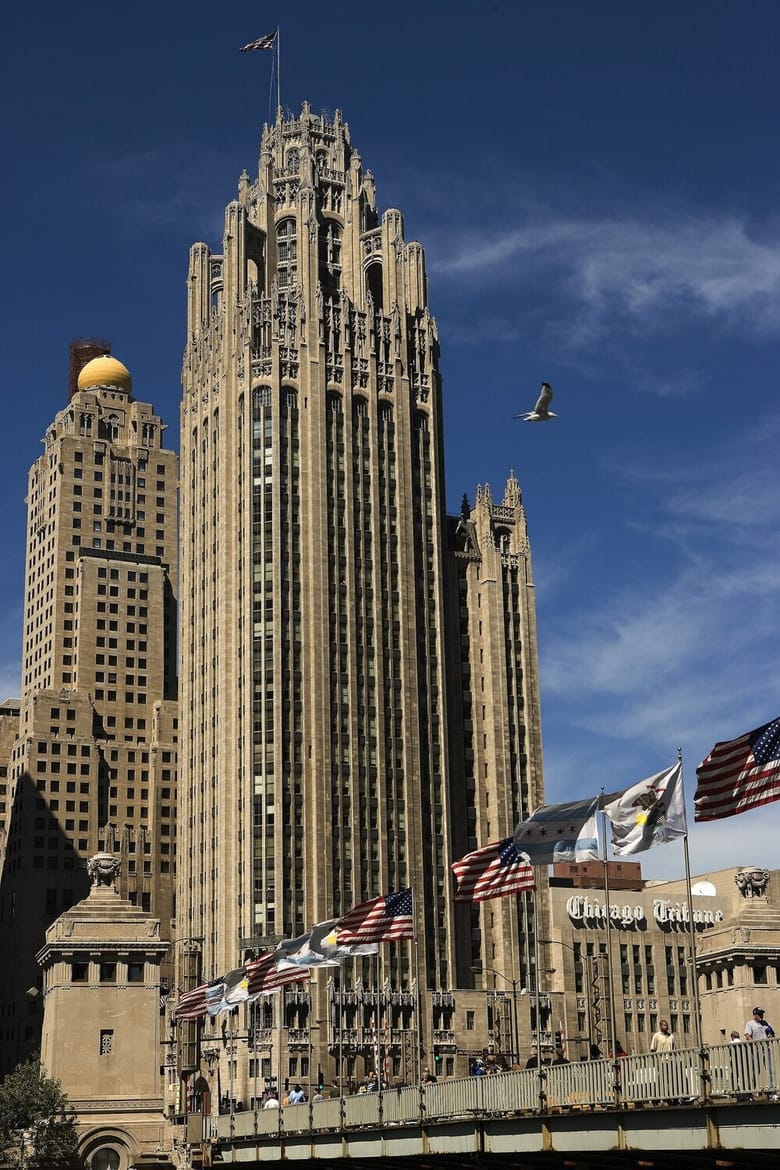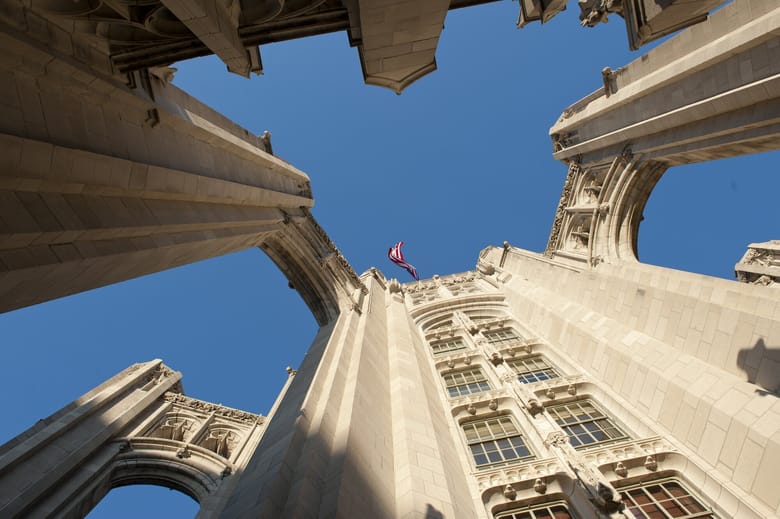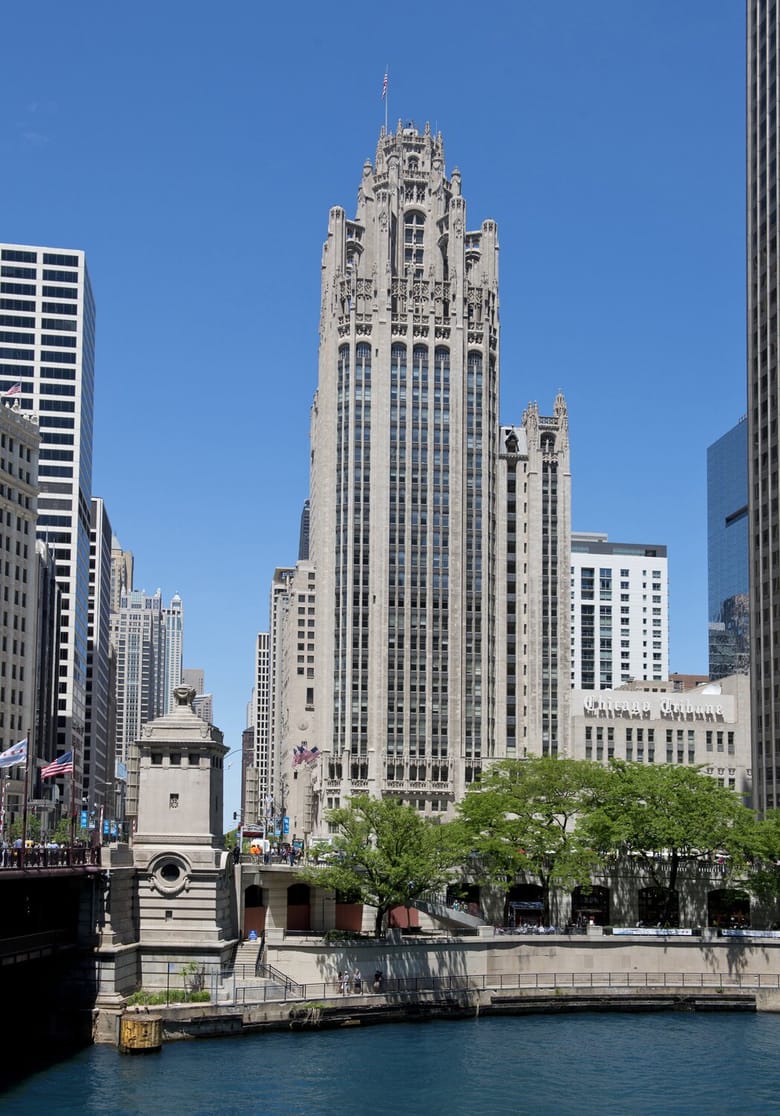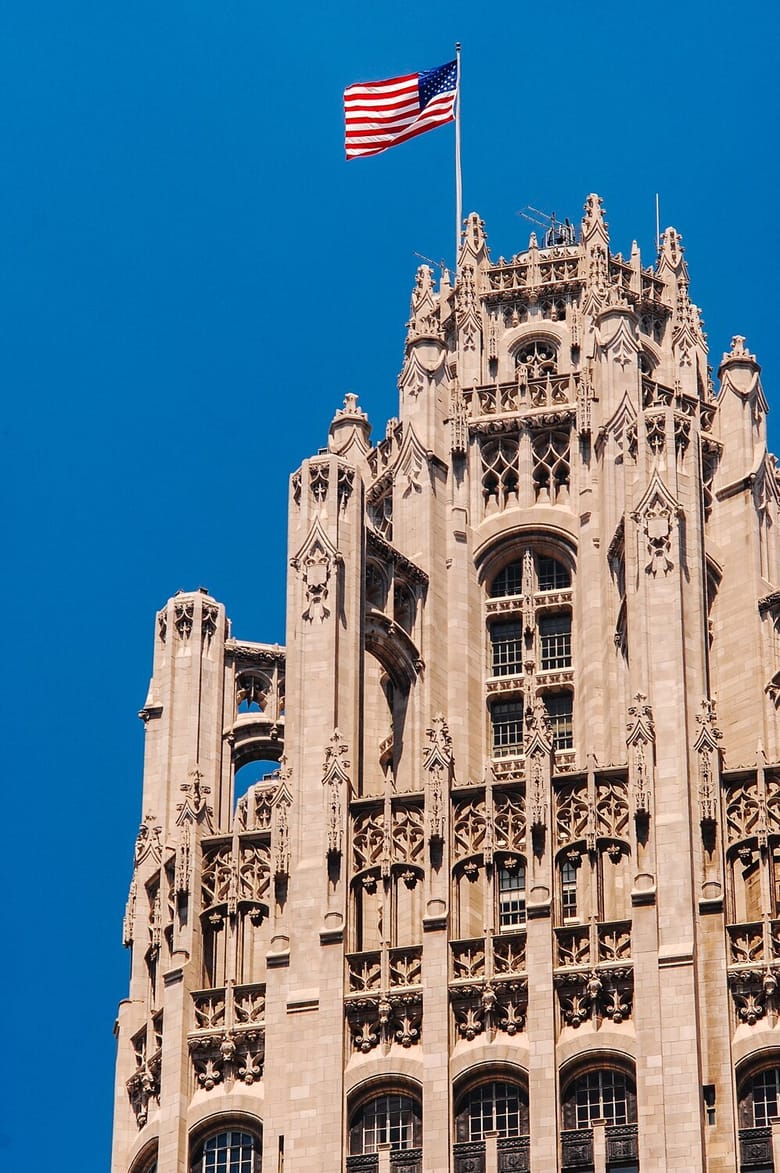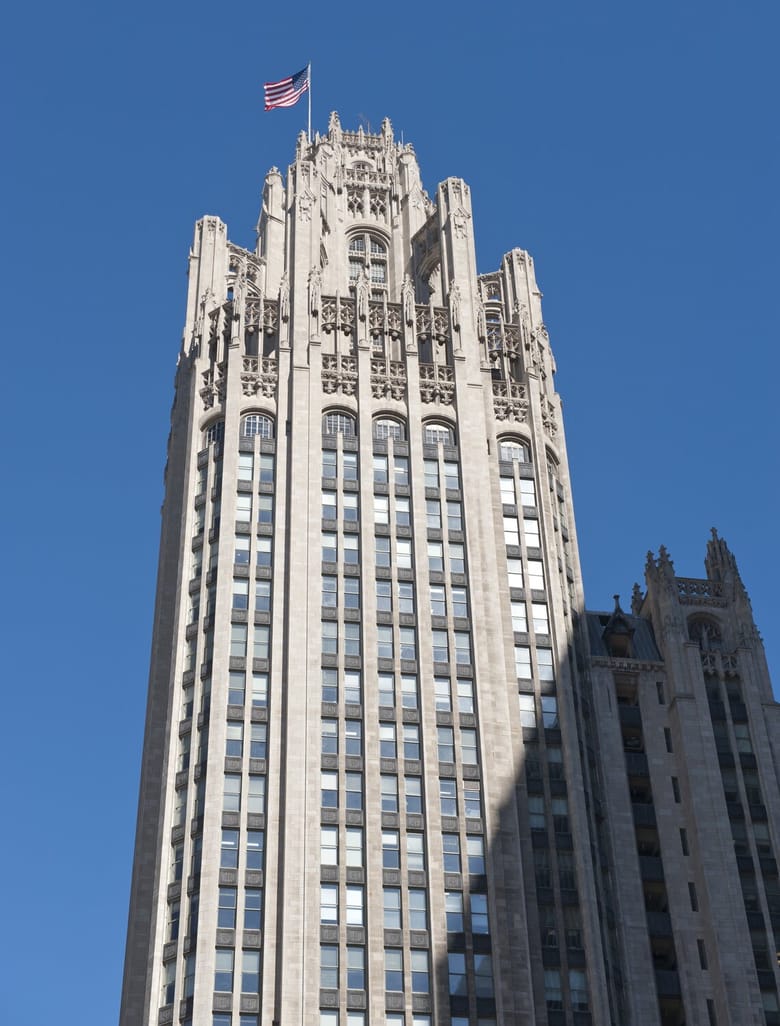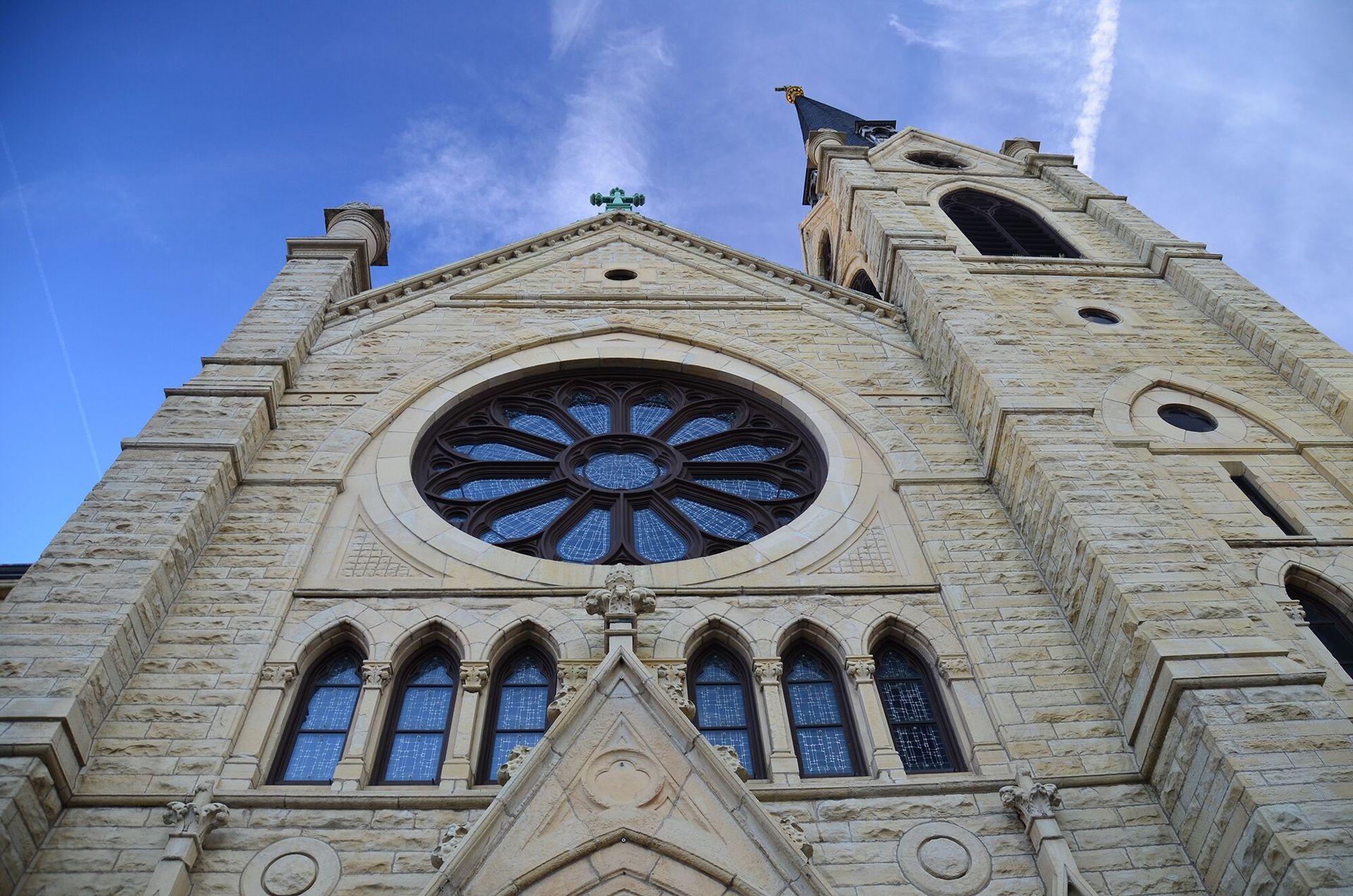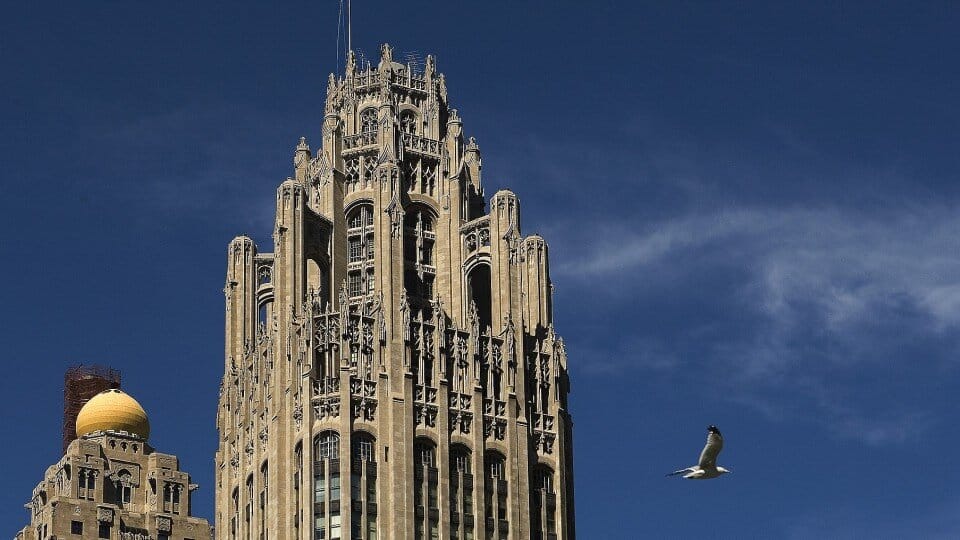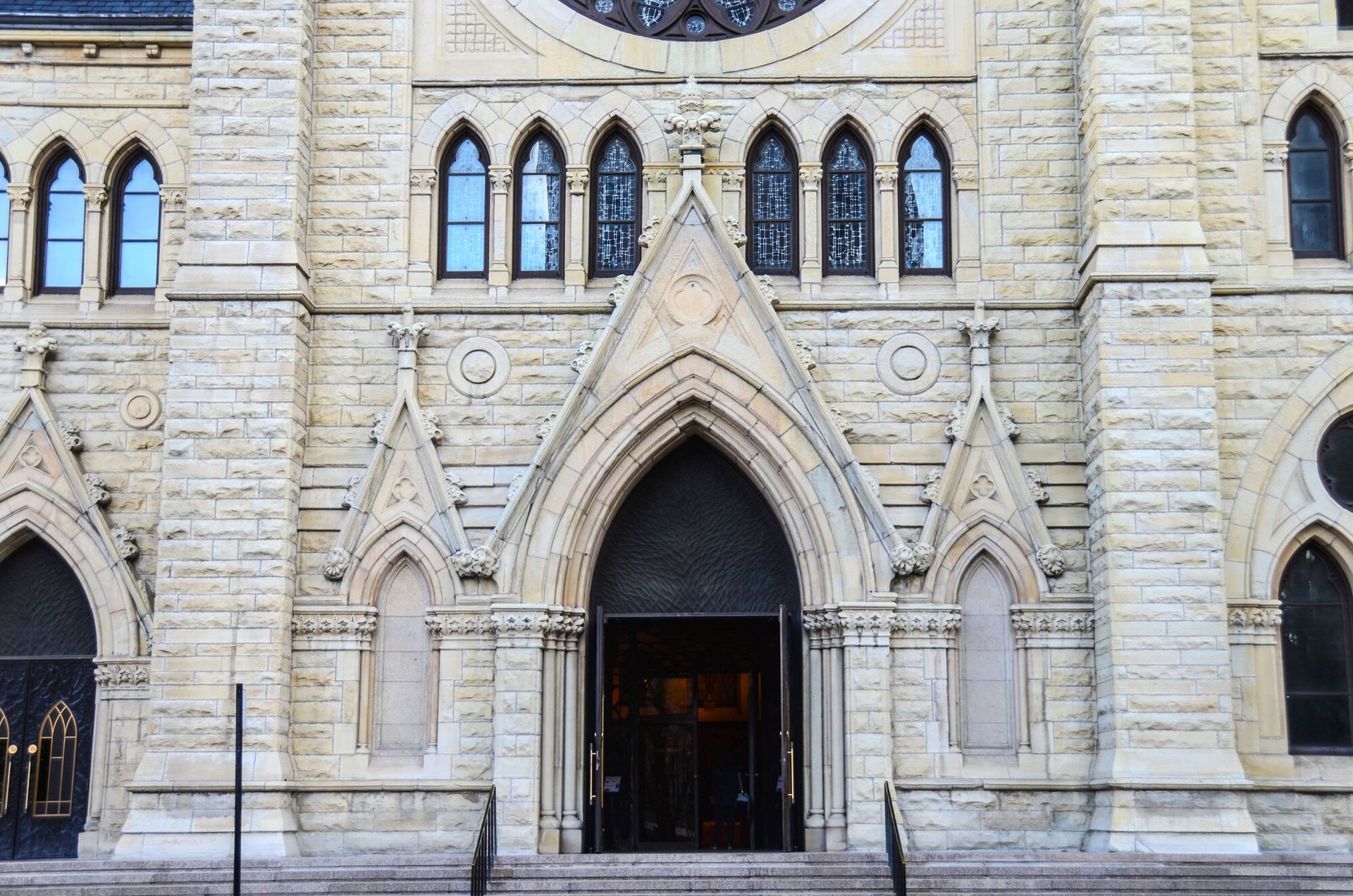Tribune Tower
Designed by Howells & Hood, the Tribune Tower was the result of an international design competition to create "the most beautiful building in the world."
Courtesy Eric Allix Rogers
Courtesy Eric Allix Rogers
Official Name | Tribune Tower |
Address | 435 N. Michigan Ave. |
Architect | |
Style | |
Neighborhood | Near North Side |
Current Use Type | |
Original Completion Date | 1925 |
In 1922, on the occasion of its 75th anniversary, the Chicago Tribune announced an international competition for a new downtown headquarters. The competition sought, "...for Chicago, the most beautiful building in the world." A total of $100,000 in prize money was offered with a $50,000 prize for the winner.
More than 260 entries from 23 countries, and a place in history as one of the largest, and most important architectural competitions in America—this is the legacy of the Tribune Tower.
AMERICAN VERSUS EUROPEAN DESIGN
Although 23 countries were represented in the competition, most design entries came from the U.S. and Europe. Most American entries understood the profitability of the site and maximized the amount of rentable office space in their designs.
Some European entries, however, sacrificed business practicality for a more monumental form. Austrian architect Adolf Loos proposed a giant Doric column, which may have been a pun on the columns printed in the newspaper. Italian architect Saverio Dioguardi proposed a large classical arch resembling the Arch De Triomphe in Paris.
However, the winning entry—designed by New York architects Raymond Hood and John Mead Howells—filled the permitted occupiable building envelope with floor after floor of office space.
A CATHEDRAL FOR JOURNALISM
Hood and Howells’ winning Gothic Revival tower used architectural ideas borrowed from the past. The lower office block is sheathed in Indiana limestone with vertical piers and horizontal spandrels characteristic of Art Deco. The building's crown recalls a Medieval European tower, imitating the Butter Tower of the 13th-century Rouen Cathedral in France. Inside, visitors encounter a Hall of Inscriptions. Carved into the lobby walls are famous quotations from Benjamin Franklin, Voltaire, Thomas Jefferson and James Madison, praising and exalting freedom of the press.
While some critics had hoped the winning design would point toward the future of American architecture, Hood and Howells' design appealed to the newspaper owners' sense of nostalgia, history and moral purpose.
Did you know?
The creatures and figures tucked into the tracery above the Tribune Tower's entrance represent animals from Aesop's fables—including the fox and the grapes and the crow and the pitcher.
Did you know?
On the top left and right corners of the main entrance, the architects included references to themselves in the tracery—a howling dog (Howells) and a Robin Hood figure (Hood).
Did you know?
Colonel McCormick, the newspaper’s owner during its headquarters' construction, had secret doors and passageways built which lead to the crown—just in case the building was ever stormed.
Did you know?
A collection of building fragments from around the world are embedded into the building’s stone facade. The earliest fragments were brought back to Chicago by Tribune correspondents at the request of Colonel McCormick and the tradition has been carried on.
Docent perspective
Tribune Tower: Built on Legacy
Tribune editors Robert McCormick and Joseph Patterson built a monumental building when they commissioned the Tribune Tower. The tower was consistently added on to throughout the years by the addition of stones to the base of the tower. As Katherine Solomonson, author of the Chicago Tribune Tower Competition tells us, these stones were collected by McCormick and his foreign correspondents over the years and make for an interesting addition to the building.

